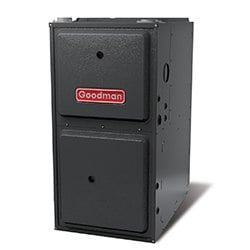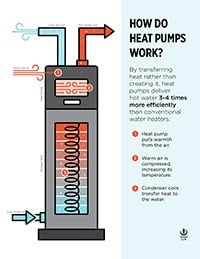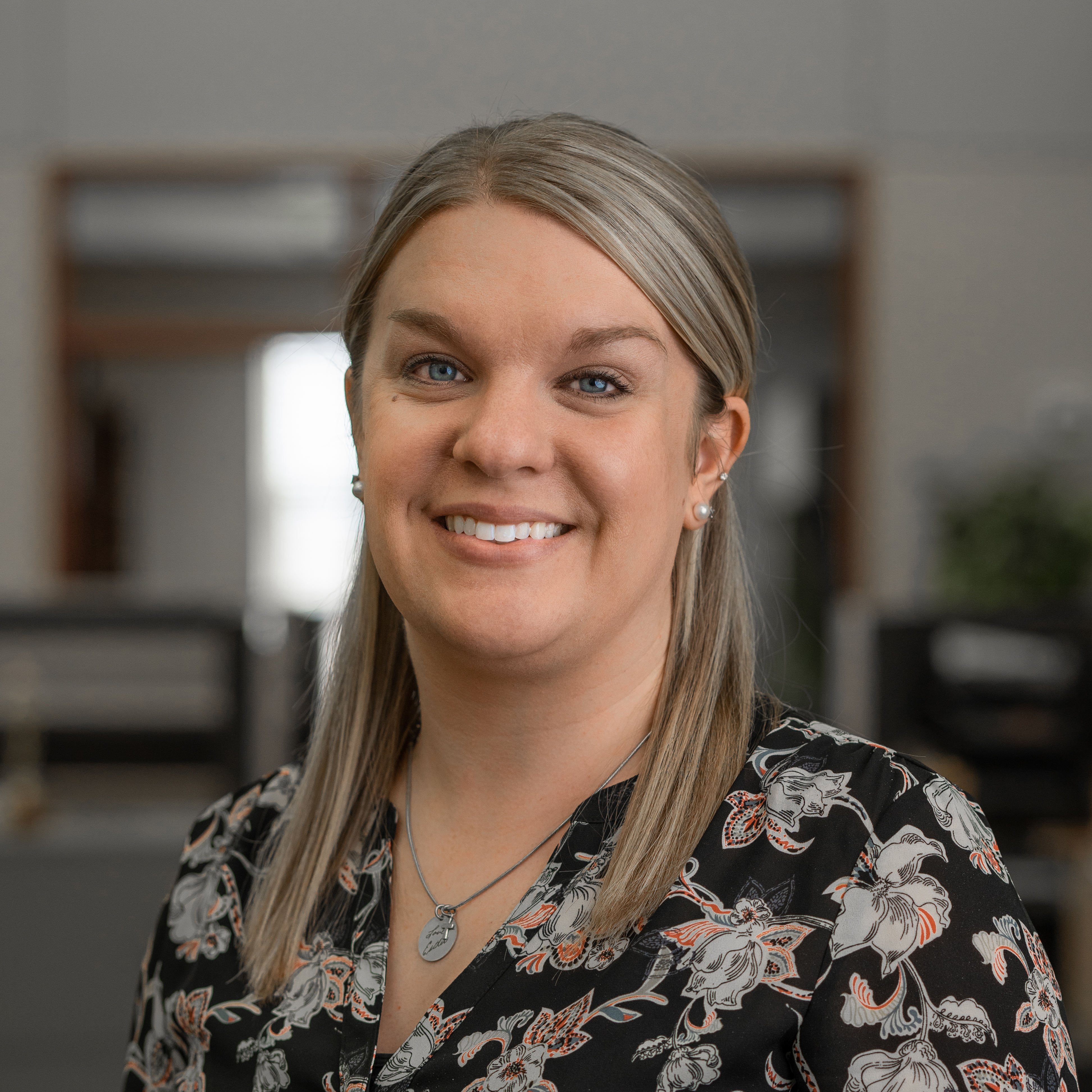The 3 Best Ways to Heat a Pole Barn in 2025
Angie joined FBi Buildings in 2012 and is now the Director of Marketing. She's an avid reader and enjoys outdoor leisure and cheering on her two daughters at their sporting events.
If you live in the Midwest (like we do), you never know what type of weather you’re going to get...especially in the winter months. Why? Because the winter weather here can be so unpredictable.
One day it’s warm...the next day it’s rainy...and the next day? There’s so much snow on the ground that you’re stuck at home. For some people that’s probably an ideal situation to deal with, but for others they still have work that needs to be done. Maybe they have a long commute to work, or maybe their kids are on a two-hour delay and they need to drive them to school, or maybe they have stalls that need cleaned and hay that needs in their horse barn. But what happens when it gets cold? What actions do you take to make sure that your home is nice and cozy on the inside? Do you do anything specific to help prepare your home for the winter months?
I’m sure some of you might trade your nice, satin bed sheets in for some warm and cozy flannel ones. Others might plug in their Edenpure space heaters so their furnace doesn’t have to work twice as hard. But what about your pole building? Do you do anything specific to prepare for the winter months?
Energy efficiency is an important factor for most of our customers – especially when they’re looking to lower operating costs and have a post frame building that will be comfortable (both with heat and air flow) 365 days a year.
What are the best ways to heat a pole barn?
- Furnaces
- Heat Pumps
- Radiant Heating Systems
Do you use a wood burning stove? What about a gas fireplace? Or, if you have a home that has a lot of tile or laminate floors, do you use radiant heat? Side note...if you’re considering radiant heat I highly recommend it. Having warm tile to walk across during the cold winter months is not something to complain about.
We do whatever we can to make sure that our home is comfortable during the winter. Why? Because we want to be comfortable.
But what about your pole barn that you use as a farm shop? What actions do you take to make sure that it’s comfortable for you?
For some, your pole barn is where you go to work...it’s where you spend the majority of your day. Doesn’t it make sense to make sure it’s comfortable for you, too?
Heating and cooling are the largest energy drains in post frame buildings with climate-controlled spaces. If you plan to heat and/or cool all or even a part of your building, you will want to make educated decisions about purchases and installations...and that’s where we can help.
*Tip: Some utility companies offer rebates for installation of high-efficiency systems. Check with your local utility company for details.
The 3 Best Ways to Heat A Pole Barn

1. Furnaces
Furnaces create heat by burning fuel, usually natural gas or propane. Commonly used in homes, furnaces can also be used in pole barns and in fully finished interiors.
But remember, if you decide to put a furnace in your pole barn it will require a forced air distribution system involving ductwork. Where aesthetics and heating evenly are not critical, such as a hobby shop, forced-air heating units can also be hung from the ceiling. If you decide to go this route, there is no ductwork required.
Buying advice: The efficiency of new furnaces is measured by the annual fuel utilization efficiency (AFUE), a measure of seasonal performance. For example, gas furnace models range from 78% to 96% efficiency.
2. Heat Pumps
 A more energy-efficient alternative to a furnace is a heat pump. A heat pump is an electrically powered all-in-one heating and cooling forced-air system that works year round. Its purpose is to transfer heat from one place to another.
A more energy-efficient alternative to a furnace is a heat pump. A heat pump is an electrically powered all-in-one heating and cooling forced-air system that works year round. Its purpose is to transfer heat from one place to another.
During the cold, winter months, a heat pump extracts heat from an outside source and transfers the heat indoors. In the summer the direction of the heat flow is reversed, extracting heat from indoors and transferring it outdoors, to provide air conditioning.
The most common type of heat pump is the air-source heat pump, which transfers heat between your building and the outside air. Higher efficiencies are achieved with geothermal (ground or water-source) heat pumps, which transfer heat between your building and the ground or a nearby water source.
Buying advice: For heating purposes, heat pumps are rated by their “heating seasonal performance factor,” or HSPF.
Heat pumps are extremely efficient to operate, but you should be aware that compared to conventional systems they:
-
Have a higher initial cost
-
Take much longer to warm up or cool down a space
-
Require movement of a higher volume of air
3. Radiant Heating Systems
 If you decide to use radiant heat for your pole barn or post frame building, it’s important to know that they do involve supplying heat directly from the ceiling or floor. These are usually more efficient than forced-air heating because no energy is lost through ductwork. However, if you want cooling, you will have the cost of installing ductwork just for the A/C.
If you decide to use radiant heat for your pole barn or post frame building, it’s important to know that they do involve supplying heat directly from the ceiling or floor. These are usually more efficient than forced-air heating because no energy is lost through ductwork. However, if you want cooling, you will have the cost of installing ductwork just for the A/C.
Radiant heat works by warming objects (including occupants) directly, instead of warming the air; therefore, it is highly recommended for post-frame buildings with doors that are opened a lot.
-
Surface-mounted radiant ceiling panels can be used to provide supplementary or zoned heat, or they can be used as the primary source of heating for an entire building. These panels can rapidly change a room’s environment; they heat quickly when turned on and cool quickly when turned off.
-
Radiant floor heating systems, which are significantly different from and have a higher initial cost than their ceiling-mounted counterparts, usually transmit heat with water. These systems take considerable time to heat up but retain their heat for a long time.
-
Stoves provide alternative heating sources and range from traditional wood-burning units to those that burn corn, oil or pellets made of compacted sawdust. They can either be installed inside your building or located outside and then connected to a forced-air component that is inside. The latter are typically wood furnaces. A reputable dealer should be able to explain the different options and talk with you about sizing a stove to your space.
You can use a stove as your only source of heat or to complement a forced-air heating system. Before considering a stove for economic reasons, you should also take into account the following:
-
The need to buy and store fuel
-
The time and effort required to tend the fire
-
Stoves may emit air pollutants that you would not get with a furnace or heat pump
Also, make sure your local building codes allow wood-burning appliances in your new pole barn. It’s important to double check before buying one. Why? Because of the risk of fire. We would hate to see something happen to the new post frame building you just put up.
How you heat your pole barn is ultimately your decision. As a trusted builder in the Midwest, we just want to make sure that you are aware of the different heating options that are available for you.
What Heating Option Will You Choose?
Do you have more questions about heating not covered in this article? Be sure to request our Energy Efficiency Brochure or check out our Pole Barn Insulation guide. If you have more questions once you read through it, we will be glad to talk through those over the phone.
Have more questions that are not covered in this article? Please contact FBi Buildings at 1.800.552.2981 or click here to email us. If you are ready to get a price, click here to request a quote and a member of our sales team will give you a call.


